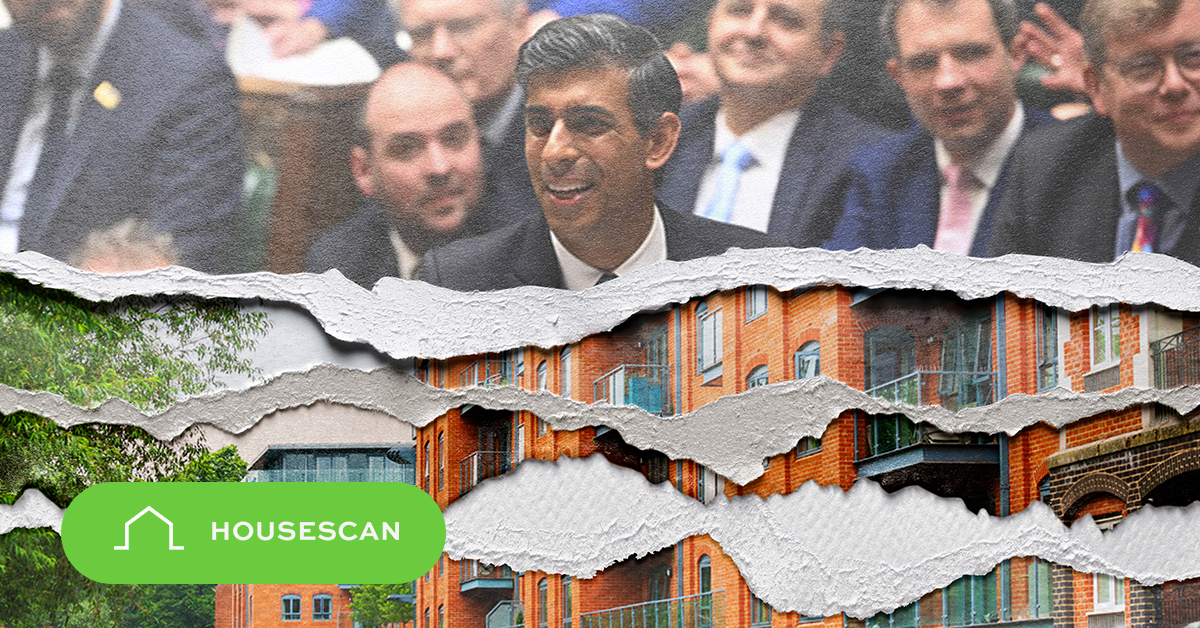
The new build sector can be a minefield of snagging issues and property related problems that plague homebuyers long after they’ve purchased the property. But what can you do about it?
In today’s blog post, HouseScan have taken a look at where homebuyers stand should they find their new home is unfit for purpose and the options open to them to challenge those to have supplied it.
Consumer Code for Home Builders
Overseeing all operations in the new build home sector is the Consumer Code for Home Builders. It is an industry-led code of conduct that all UK homebuilders should adhere to. It serves as a useful tool for any consumers who want to make a complaint and is designed to ensure that buyers understand their rights before and after they move into their new home.
For the Consumer Code to be applied, buyers must have bought a home built by a registered builder and insured by home warranty bodies of the National House Building Council, Premier Guarantee, or LABC Warranty.
Warranties
All new build homes will come with some sort of warranty. There will often be a builder warranty of around ten years to protect against any structural building issues, and also a developer warranty, often shorter at around two years, to protect against issues with fixtures and fittings.
All warranties should be read carefully at the time of purchase because there will be a lot of small print, possibly containing a list of things that the buyer mustn’t do in order to make sure the warranty is valid.
Delayed Completion
If a home is not completed in the time it was promised after reservation, the consumer has the right to cancel the purchase altogether and walk away unscathed and with a full refund of any reservation fee or deposit.
Problems with fixtures and fittings
The most serious new build snags usually involve the construction and building of the home, but fixtures and fittings snags, while less serious, can still be very expensive to resolve.
If a buyer discovers any problems, they should be reported to the developer or build immediately. Indeed, the National House Building Council recommends that thorough checks be carried out at all key stages of construction, so there is no excuse for snags to appear in a finished home.
The buyer should also be provided with the results of a snagging survey before moving in, a report that highlights all issues and ensures that the developer or builder is going to fix them ASAP.
Independent Dispute Scheme
If snags and complaints aren’t resolved via the builder complaint process or by the developer, consumers can request to be referred to an independent dispute resolution service. This must be done within the first three months of receiving the builder’s final response to the initial complaint.
The forms required for this will be provided by the home warranty body along with all of the required evidence.
Compensation Awards
If a complaint is not dealt with in an appropriate manner, or it’s proven that the building of the house was significantly substandard, compensation may be granted to the consumer. Decisions will be made by an adjudicator who will take their advice from the above mentioned Consumer Code for Home Builders.
Compensation for inconvenience can be as much as £250, while awards for poor practice can reach as high as £15,000. The house builder is legally required to honour the decision.
General Legal Rights
A few final words about more general aspects of consumer legal rights. First of all, they’re limited.
Contracts get rid of most of the builder’s liability and many builders even try to remove any liability clauses altogether. This means that most rights usually depend on the consumer’s insurance policy and can still be very hard to enforce
To take it one step further and question whether a builder is in breach of basic human rights, it would be necessary to prove that the property “is unfit for human habitation”.
Founder and Managing Director of HouseScan, Harry Yates, commented:
“Consumer rights are a tricky subject in the new build sector and the wider property industry. Not only are they few and far between, but big firms often put a lot of effort into negating any liability or risk on their part. Most of the time, they get away with doing so without challenge.
“That’s why it’s vital to identify any problems or snags at the earliest possible opportunity. This means they can then be referred back to the builder and developer and remedied well within the warranty period. A comprehensive snag report on day one can save an awful lot of pain and money later down the line. And opting for a third party to carry this out can also add further weight when holding your housebuilder to account.
Related Posts
Quality Assurance in the Post-Pandemic Housing Boom: Why Professional New-Build Inspections are Essential
The COVID-19 pandemic triggered seismic shifts in the real estate market, sparking a surge in…
Major Changes to UK Leasehold Laws Announced in 2023
The UK government has announced sweeping reforms to leasehold laws in England and Wales, bringing…
Women in Construction: A Conversation with Helen Mackenzie
How well this mistaken ideas off denouncing pleasure & praisings will give you complete.
The Power of Thermal Imaging in Professional Snagging
How well this mistaken ideas off denouncing pleasure & praisings will give you complete.








